- News
- Reviews
- Bikes
- Accessories
- Accessories - misc
- Computer mounts
- Bags
- Bar ends
- Bike bags & cases
- Bottle cages
- Bottles
- Cameras
- Car racks
- Child seats
- Computers
- Glasses
- GPS units
- Helmets
- Lights - front
- Lights - rear
- Lights - sets
- Locks
- Mirrors
- Mudguards
- Racks
- Pumps & CO2 inflators
- Puncture kits
- Reflectives
- Smart watches
- Stands and racks
- Trailers
- Clothing
- Components
- Bar tape & grips
- Bottom brackets
- Brake & gear cables
- Brake & STI levers
- Brake pads & spares
- Brakes
- Cassettes & freewheels
- Chains
- Chainsets & chainrings
- Derailleurs - front
- Derailleurs - rear
- Forks
- Gear levers & shifters
- Groupsets
- Handlebars & extensions
- Headsets
- Hubs
- Inner tubes
- Pedals
- Quick releases & skewers
- Saddles
- Seatposts
- Stems
- Wheels
- Tyres
- Health, fitness and nutrition
- Tools and workshop
- Miscellaneous
- Tubeless valves
- Buyers Guides
- Features
- Forum
- Recommends
- Podcast
review
£1,180.00
VERDICT:
If you haven't yet made the leap to an electronic groupset, now could be the time
Weight:
702g
Contact:
At road.cc every product is thoroughly tested for as long as it takes to get a proper insight into how well it works. Our reviewers are experienced cyclists that we trust to be objective. While we strive to ensure that opinions expressed are backed up by facts, reviews are by their nature an informed opinion, not a definitive verdict. We don't intentionally try to break anything (except locks) but we do try to look for weak points in any design. The overall score is not just an average of the other scores: it reflects both a product's function and value – with value determined by how a product compares with items of similar spec, quality, and price.
What the road.cc scores meanGood scores are more common than bad, because fortunately good products are more common than bad.
- Exceptional
- Excellent
- Very Good
- Good
- Quite good
- Average
- Not so good
- Poor
- Bad
- Appalling
SRAM's new Red eTap wireless groupset is one of the most highly anticipated product releases in a while, and luckily the wait has been worth it. It's a supremely impressive groupset, providing slick and quiet gear changes, and with an intuitive shifting layout that sets a new benchmark. It's cheaper than Shimano Dura-Ace Di2 as well.
The fact that it's wireless is impressive enough, but when you're riding, this is overshadowed by the ergonomics and performance of the groupset. In my opinion it offers the easiest and most intuitive shifting layout of any groupset currently on the market. It's a joy to use.
> Find your nearest dealer here
Being wireless will make building a bike easier and quicker for both a bicycle manufacturer and consumer, with some potential to free up a frame designer from the constraints and challenges of internal cable routing, and no gear cables will ever need replacing or servicing, but this all sort of fades into the background because the best thing about eTap for me is the new shifting layout SRAM has been forced to develop due to the myriad of patents that exist.
In use
This review is primarily focused on the performance of the electronic shifters/derailleurs, because the rest of the groupset – the cranks, brakes, cassette and chain – are essentially the same as those you'll find on Red mechanical, albeit with a new finish.
Ease of use is its biggest appeal. SRAM had to develop an alternative to its DoubleTap (where one lever shifts both up and down the cassette) for eTap, and what it has come up with is quite simple, but hugely effective and, in my view, a bigger game-changer than the lack of wires.
Behind each brake lever is a shift paddle, as with DoubleTap, but how the new ones function is quite different. The right paddle moves the rear mech to the right (to a smaller sprocket) while the left paddle moves the rear mech to the left. Press both together to shift the front mech between the two chainrings. It sounds simple, and in use, it really is.
In reality, it only takes a couple of miles to get used to. I regularly ride bikes with the three main groupsets, and found it took hardly any time at all to familiarise myself with the workings of eTap. After a couple of rides, it simply becomes second nature. In fact, it makes it hard to go back to a conventional groupset.
The tactile feeling of the shift levers is a highlight. Unlike Di2, the paddle actually moves, so it feels more like a mechanical shifting system; it doesn't feel like you're just pressing a button.
While Di2 is an impressive groupset, I've never liked the lack of tactile feedback from the twin buttons and the ease of pressing the wrong button, a problem exacerbated when riding in the winter with thick gloves.
There is no confusion with eTap. No accidentally shifting into the wrong gear, because the paddle only has one task, and your brain doesn't forget which is which. This improved tactile feeling of the groupset is, for me at least, far superior to Di2. At the risk of repeating myself, it makes eTap a joy to use.
It's also worth mentioning that you can re-program the shift on Di2 to exactly the same shifting format as eTap - one well known bike journo has been riding this set-up on Di2 for years. You will though need to get yourself a Di2 PC Interface Device ( it does other things too) although your local Shimano dealer could also probably do it for you.
Like Di2 with its optional Sprint shifters, SRAM has developed Blips – small buttons that you can conceal under the bar tape on the drops for changing gear when riding in the drops. These can be positioned anywhere on the handlebar, with a short wire connecting them to the shifter.
A Blip on the drops is a good idea if you're racing, but another good place would be in the centre and underside of the handlebar, so you could shift gear while on the tops. Useful when climbing or riding over cobbles.
Shift performance
So the shifting layout of eTap is highly commendable, but what about the actual shifting performance? It's very good. I've been clocking up hundreds of kilometres on my local rides, taking part in the local frantic club run and lots of solo rides on roads that, it must be said, sometimes resemble a muddy track more than a country lane.
On the whole, the shifting is very quick and crisp. Most of the time, trying to distinguish whether eTap is slower to shift than mechanical Red or Dura-Ace Di2 is impossible. It's as fast as you need, with no lag or delay when requesting another gear, whether you're cruising or in a chain gang.
Shifting works well under load, whether working up the cassette when sprinting out of the saddle, or changing down from the big ring when climbing out of the saddle, when you realise the hill is steeper than you thought at the bottom.
I deliberately tried to catch eTap out, performing some ugly shifts and crossing the chain to try to force it into struggling, but nothing I did fazed the groupset. It never missed a shift, always delivering a gear change when called for. I changed gear during all-out sprints and climbing 20 per cent ascents, and it never once caused any issues.
You can also change front and rear gears simultaneously. If you're coming to a climb and want to quickly shift down from the big to small chainring, and shift up one or two gears at the back to maintain the same cadence, it's easy. It's just a matter of pressing both paddles together to change at the front, then removing your left finger from the shifter but keeping your right finger pressing the lever, and the rear mech will then shift the mech down the cassette.
eTap is also much quieter than Di2 – there's none of the electronic whirring you get with Shimano's groupset, it's silent. You can also shift as many gears as you want with one press. Just hold your finger on the paddle and the mech will continue to move the chain across the cassette until it runs out of sprockets.
While on the whole the gear shifting performance was flawless, I did find some occasional inconsistencies. Sometimes shifting up the cassette to a bigger sprocket – and it seemed to only happen in certain gears – was met with a bit of a delay as the chain didn't move over immediately. Gear changes going down the cassette proved slicker. I'm wondering if the cassette is a cause of the issue, but longer term testing would be needed to get to the bottom of it.
Front shift performance is an improvement on mechanical Red: shifting down is comparable, but the chain moves from the small to big chainring much more quickly. You can shift under higher loads as well, but I'm still programmed from years of riding to slightly ease up on the cadence when performing a shift to the big chainring to get the smoothest possible gear change.
The hood body has also shrunk in size a little compared to Red mechanical. This makes it easy to fully grasp with gloveless hands, with the paddles falling nicely to place for your fingers. The brake levers have a nice curve and shape that makes operating them from the hoods or drops easy. Brake lever reach can be adjusted.
Making on-the-fly indexing adjustments is easy with eTap: on the back of each paddle is a small function button; you simply depress this button and at the same time move the paddle to adjust the rear mech. It's very easy, and easier in my opinion than making changes with Di2.
How does it work?
From a distance the groupset doesn't look much different to regular SRAM Red. The telltale clue are the two batteries attached to the mechs. SRAM claims the batteries powering the derailleurs are good for up to 1,000km or 60 hours of typical riding, but the nature of your local riding terrain and your style of riding (how much you change gear, bascially) will influence how long the batteries last. Inside the shifters are smaller CR2032 batteries that are said to last two years, based on 15 hours a week.
SRAM has developed its own Airea wireless technology. It's not Bluetooth, or ANT+, or any other open source protocol. It has a low power usage and range of 100m, and as this article shows, it can't be hacked. Security has been a cornerstone of its development, with an encryption that is more watertight, apparently, than a cash machine. eTap has been raced for the past season and there are two teams using it this year (AG2R and Katusha) without any issue of crossed signals or interference. So there shouldn't be any concerns with interference.
There are no on/off buttons. The system sleeps, using accelerometers to monitor movement. Come to the bike first thing in the morning and press a button, and nothing happens. Move the bike and the sensors detect the movement and the system wakes up. I've been riding a bike with eTap for a week and this aspect of it is something I haven't noticed at all. It's unobtrusive.
Where eTap has an advantage over Di2 is being able to leave the bike in the shed or garage and whip the batteries off and take them indoors to charge. The batteries are easy to remove – just lift the retaining clip and the battery pops off. They're interchangeable too. If the rear runs out – and it's likely to go first simply because it's used a lot more – you can swap them around. The supplied charger works much like a camera battery charger, just pop the batteries into it.
I've been riding the groupset solidly for a week, clocking up hundreds of kilometres of varied but mostly rapid-pace riding, and haven't had to top up the batteries yet. The batteries are small and light enough that you could consider carrying spares, if you're doing a tour or really long distance ride, something like the TransContinental perhaps.
There are LED lights on the derailleurs and shifters that alert when a battery is running low, with a red light indicating between 5-15 hours, and a flashing light meaning you've got less than 5 hours. That should be more than enough to get home.
There's a video explaining the whole installation process here.
Weights and prices
As I said at the start, this review has primarily focused on the performance of the electronic shifters, because the rest of the groupset is essentially the same as what you'll find on Red mechanical, albeit with a new finish.
That means, if you already have a SRAM Red 11-speed bike, you'll be able to just buy the new shifters and derailleurs. The electronic shifters and mechs and other bits you need cost £1,180.
Add in the price of a cassette (£223), chainset (£361), bottom bracket (£29), chain (£38) and brakes (£228), and a complete SRAM Red groupset with eTap shifting will set you back £2,059.
For comparison, the list price for a Shimano Dura-Ace Di2 groupset is £2,404.81, while Shimano Ultegra Di2 is £1,302.82. So it's a fair bit cheaper than Dura-Ace Di2 at retail prices (though shopping around reveals you can save a fair bit - we found Dura Ace Di2 for £1579.99 and Ultegra Di2 for £859.99).
Here are some figures for you:
- Shifter: 260g / £410 for a set
- Front mech: 187g (with battery) / £265
- Rear mech: 239g (with battery) / £420
- Battery: 24g
- Blips: 16g per pair / £150 for four
- Charger pack £50
- USB firmware upgrade stick £35
Weight just for the electronic shifters and mechs is 702g. A complete groupset is 1,992g (with BB30 crank). That compares with 2,047g for Dura-Ace Di2 and 2,098g for Campagnolo Super Record EPS.
You might notice from the photos that the bike has Shimano Dura-Ace direct-mount brake callipers. That's simply because SRAM doesn't (yet) produce a suitable direct-mount brake calliper.
Conclusion
SRAM's eTap groupset is deeply impressive. The company has come to the electronic groupset market late, but it has developed a superb product that offers intuitive and reliable shifting and easy installation.
I've struggled to get too excited about electronic groupsets, until now. eTap has really impressed me. While the wireless technology is a cool feature, it's the shifting layout and ergonomics that, to my mind, most mark out this groupset from the other contenders. Based on my time riding eTap, I find it easy to recommend.
Verdict
If you haven't yet made the leap to an electronic groupset, now could be the time
road.cc test report
Make and model: SRAM Red eTap
Size tested: n/a
Tell us what the product is for, and who it's aimed at. What do the manufacturers say about it? How does that compare to your own feelings about it?
SRAM says: "At SRAM, we know that if a technological advancement clutters the experience, it shouldn't be called an advancement.
"Because it's a bicycle. It's supposed to be simple. To make something elegant to the point where it removes what's in the way... that's advancement. That is the standard we held ourselves to while developing our first electronic shifting system; SRAM RED® eTap."
Tell us some more about the technical aspects of the product?
Wireless connection via AIREA™ network for fast and clean installation
Revised ErgoBlade levers provide confident control
eTap logic and positive feedback paddles eliminate shifting mistakes
Designed to work with SRAM PowerGlide™ and PowerdomeX™ cassettes (included)
Braze-on / clamp adaptor
Designed to work with SRAM X-GlideR™ 11-speed chainrings (included)
USB dongle for SRAM RED eTap® firmware
eTap® batteries are literally a snap to remove and charge
A full charge takes just 45 minutes to complete
Up to 1000 kilometres of riding per charge
Compatible with the Garmin Edge 1000 GPS Computer for live gear notifications
Levers powered by a CR2032 battery
Rate the product for quality of construction:
9/10
It's solidly made.
Rate the product for performance:
8/10
The shifting performance is, on the whole, impressive, but occasionally upshifts were a little tardy, so a little more work needs to be done to finesse it. It's still brilliant, though, and shifting is easier than mechanical Red.
Rate the product for durability:
8/10
I've been using it extensively for a week, clocking about 500km, but the durability question needs much longer term testing – I will update throughout the year on its durability, but a week on muddy Cotswolds roads with some hose piping hasn't caused any concern.
Rate the product for weight (if applicable)
9/10
It's lighter than Shimano Dura-Ace Di2 and Campagnolo Super Record EPS.
Rate the product for comfort (if applicable)
9/10
Love the shape of the new hoods, more compact than Red mechanical and easier to wrap your fingers around.
Rate the product for value:
8/10
Well, it's cheaper than Shimano Dura-Ace Di2 and if you've already got an 11-speed SRAM (or even Shimano) groupset, it's cheaper still as you only need to buy the electricals.
Tell us how the product performed overall when used for its designed purpose
SRAM has joined the electronic groupset party with possibly the best electronic groupset.
Tell us what you particularly liked about the product
Shifting layout, shape of the hoods, quiet...
Tell us what you particularly disliked about the product
Occasionally slow upshifts.
Did you enjoy using the product? Yes
Would you consider buying the product? Yes
Would you recommend the product to a friend? Yes
Use this box to explain your score
It's a superb product that offers intuitive and reliable shifting.
About the tester
Age: 31
I usually ride: My best bike is:
I've been riding for: 10-20 years I ride: Every day I would class myself as: Expert
I regularly do the following types of riding: road racing, time trialling, cyclo-cross, commuting, touring, mountain biking
David worked on the road.cc tech team from 2012-2020. Previously he was editor of Bikemagic.com and before that staff writer at RCUK. He's a seasoned cyclist of all disciplines, from road to mountain biking, touring to cyclo-cross, he only wishes he had time to ride them all. He's mildly competitive, though he'll never admit it, and is a frequent road racer but is too lazy to do really well. He currently resides in the Cotswolds, and you can now find him over on his own YouTube channel David Arthur - Just Ride Bikes.
Latest Comments
- HKR 4 sec ago
Can't believe that child threw his bike on the floor at the end of that. Young people today have no respect... ;))
- Griff500 29 min 55 sec ago
As I said, look at pictures of the two bikes. The Addict Stem is angled upwards, and shown on the geometry drawing as being approximately at right...
- Laz 5 hours 2 min ago
hopefully, that will be the last time we see that van in drivable condition
- TheBillder 8 hours 59 sec ago
My new double glazed wooden framed sash windows are £1600 plus vat per (quite large) window. House built in 1904. The cost includes fitting and...
- galibiervelo 8 hours 16 min ago
We promote #bikefriday You dont need it - go for a spin. Nice bikes and kit are lovely, but not as noice as a dawn spin this friday morning with a...
- David9694 8 hours 19 min ago
Council acting like ‘the Sheriff of Nottingham’ with parking charges...
- David9694 8 hours 23 min ago
Man taken to hospital after vehicle crashes into pub...
- David9694 8 hours 33 min ago
Car flips in Millennium Way, Sheerness, near former Aldi supermarket that reopens as Home Bargains this weekend...
- RoubaixCube 9 hours 3 min ago
Ive been using the same £2-3 dish brush I bought from wilko, tesco or pound land for as long as I can remember. I dont understand why anyone would...












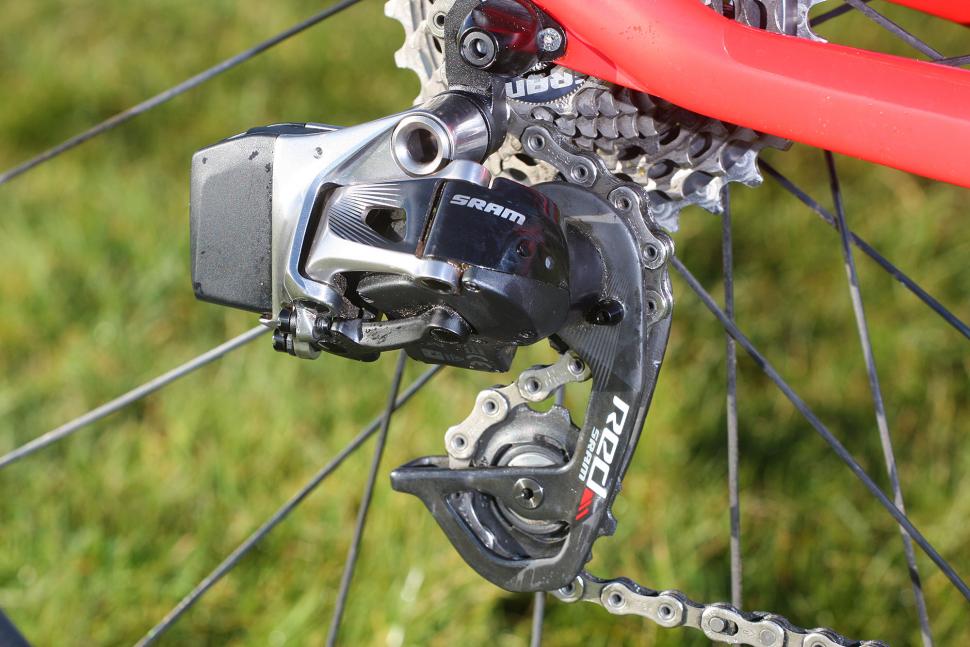
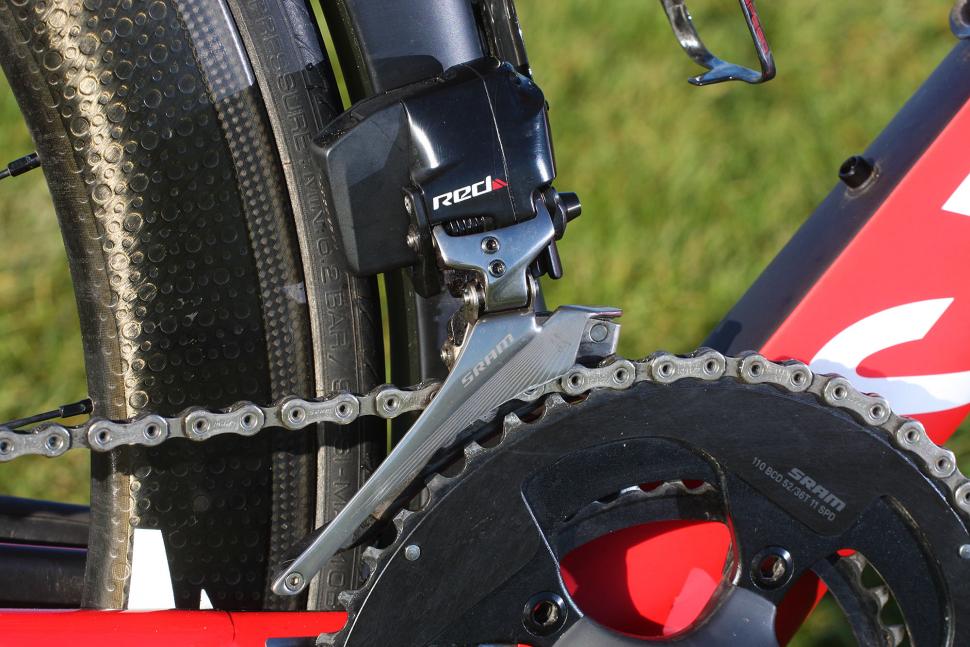
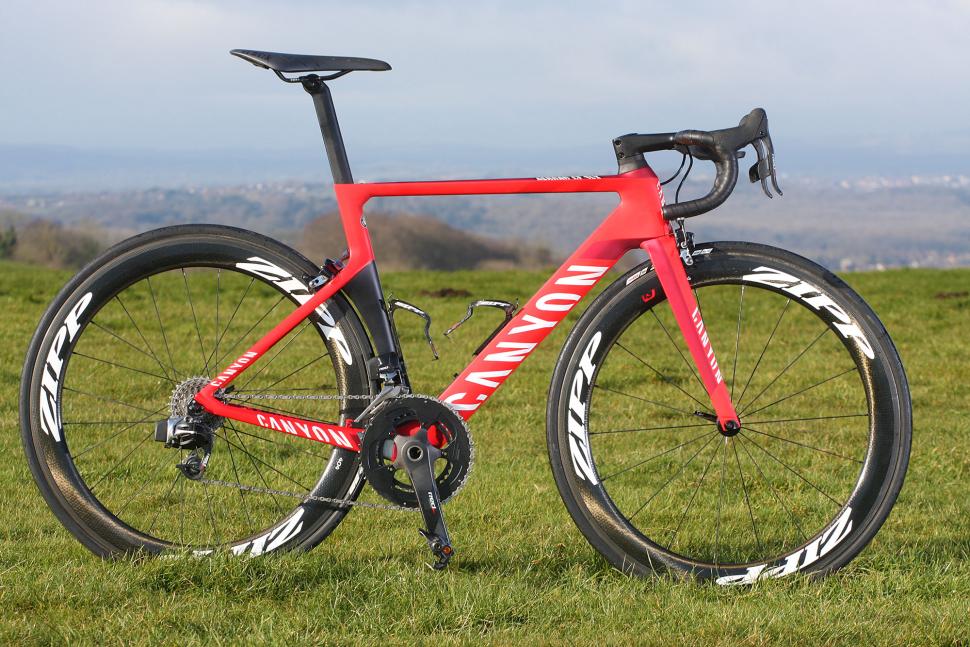
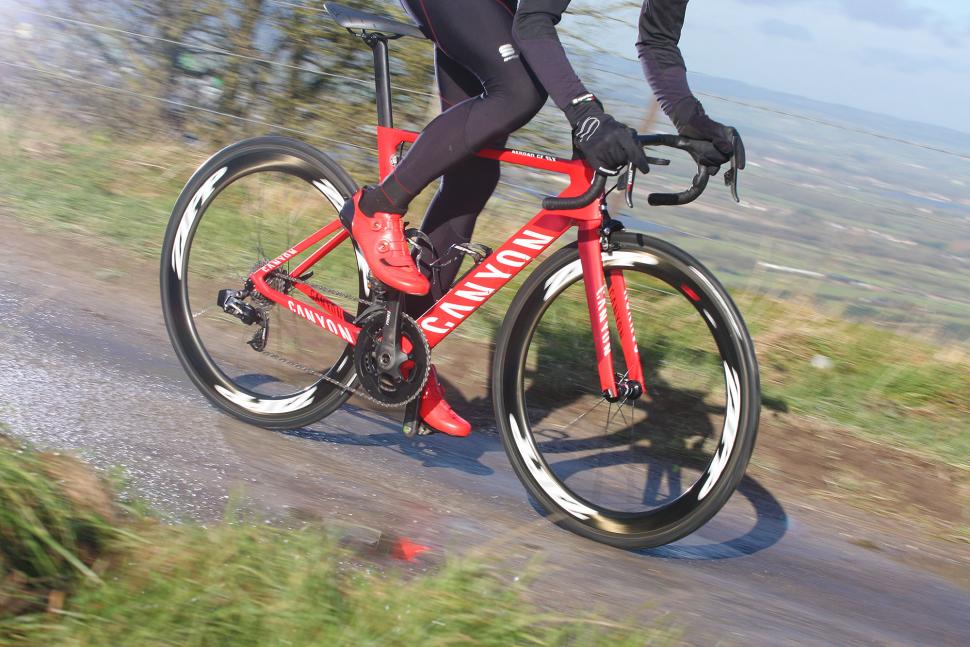
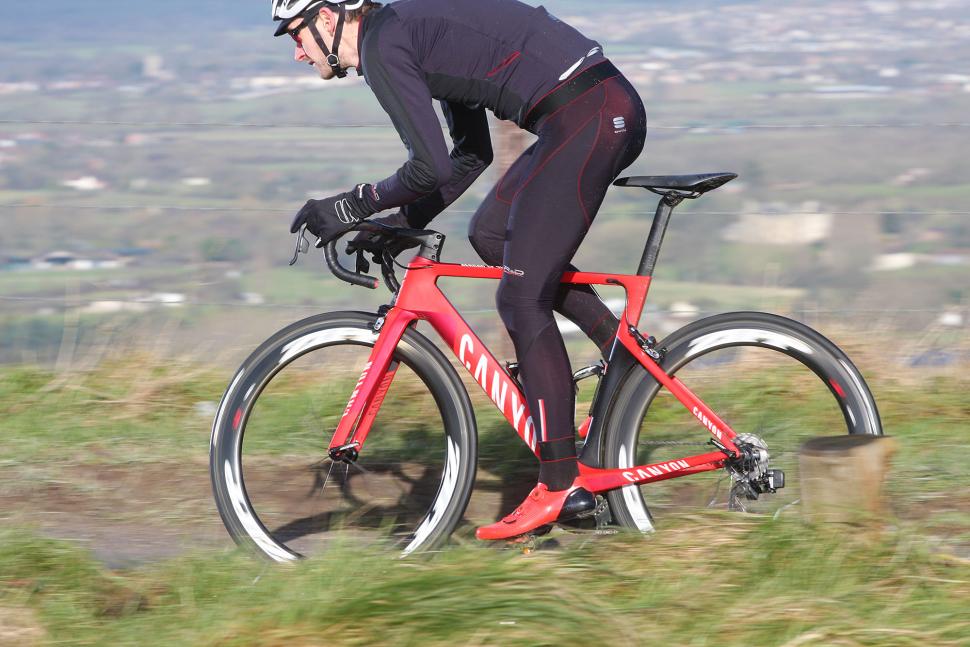



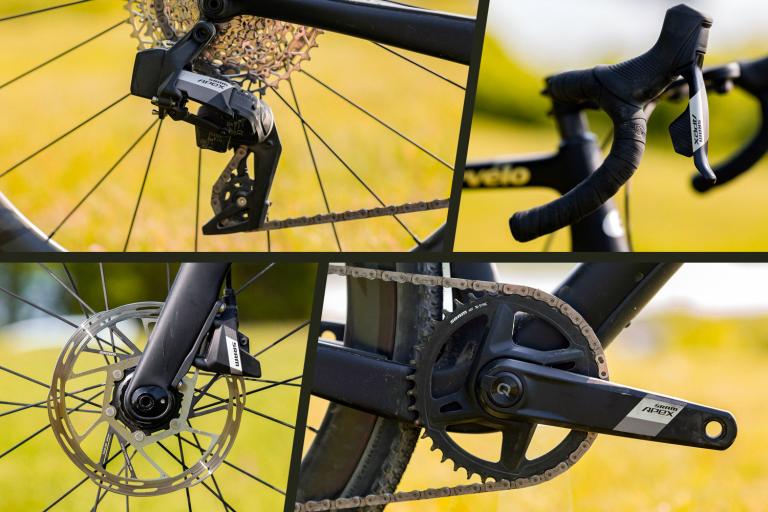
Add new comment
40 comments
This is truly a pornography, I'm jealous of the people who will use it.
Only slight hiccup is that it doesn't seem to actually be available for purchase.
Very much looking forward to setting up my tri bike with 1x 11-speed eTap.
Two Blips and a BlipBox
https://www.youtube.com/watch?v=e3vVB0zKbYQ
Four blips and a blipbox; one blip on each side of the base bar, one on each aeroextension. When the going is a bit sketchy, e.g. busy parts of a tri course, or for braking into/accelerating out of corners, being able to change gear while covering the brakes is really useful.
Also the only option if you want to run hydro discs with this groupset. I can see that the blips option might also make sense for riders who don't want to change levers. Potentially cheaper than two new levers if you can adjust to shifting with blips only?
Yep, good point. Who needs shift levers? Stick two blips in the right place in the drops to cover both hoods and drops positions, and two more on the tops for climbing. No more £X00+ shifters. And gear changing exactly where you want it! Makes the shift (sorry!) to hydraulic discs a lot cheaper too.
Haven't ridden it yet but I would think that blips (providing they're responsive when wearing gloves) will make front mech shifts easier, particularly when you need to shift when climbing. £150 for a set of 4 blips versus £300+ for shifters. On the downside you're no longer wireless and have a blip box taking up space on your stem.
di2/eps hasn't interested me. This does. Well played SRAM
di2/eps hasn't interested me. This does. Well played SRAM
Who's giot £1200 they're prepared top give me so I can have this on my bike?
Pages